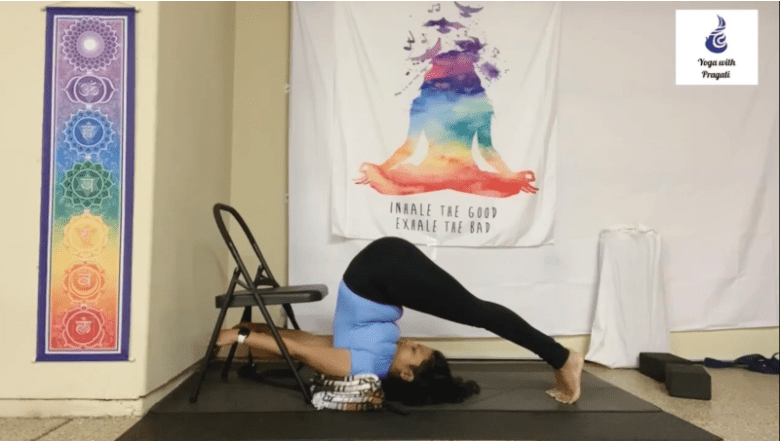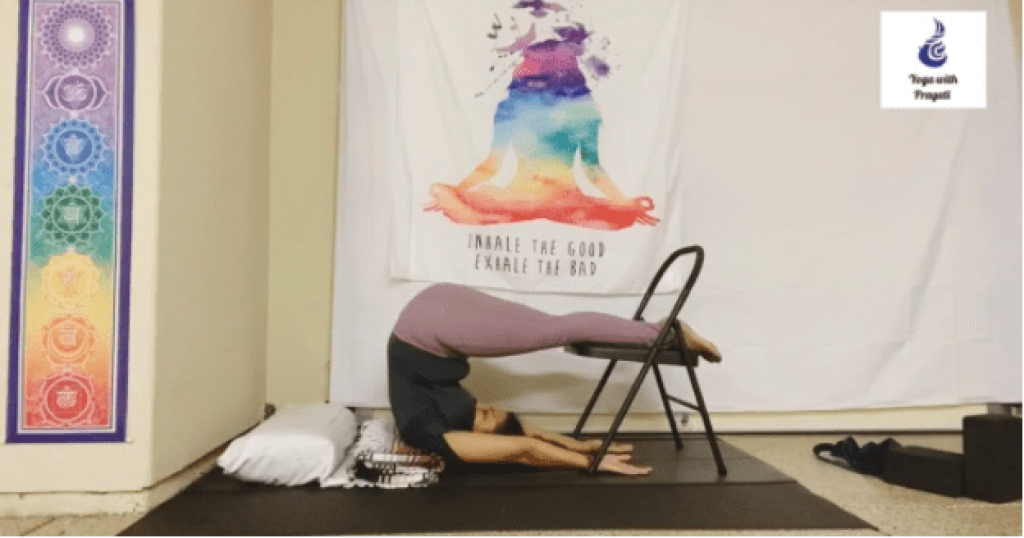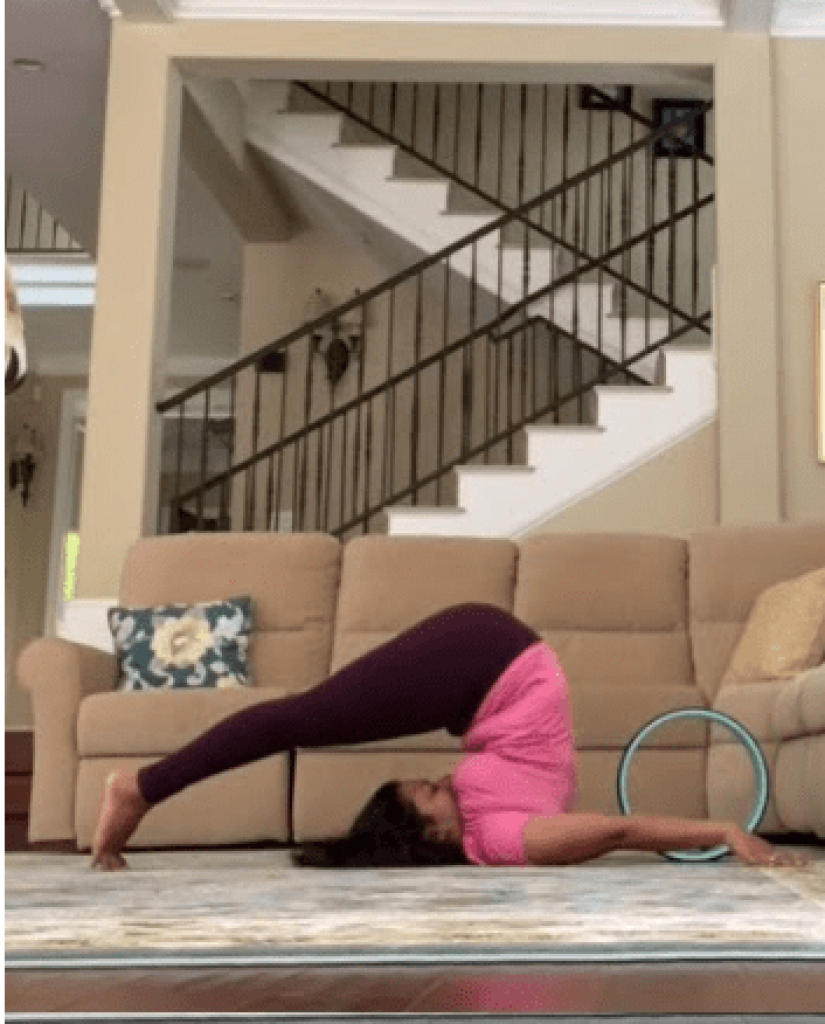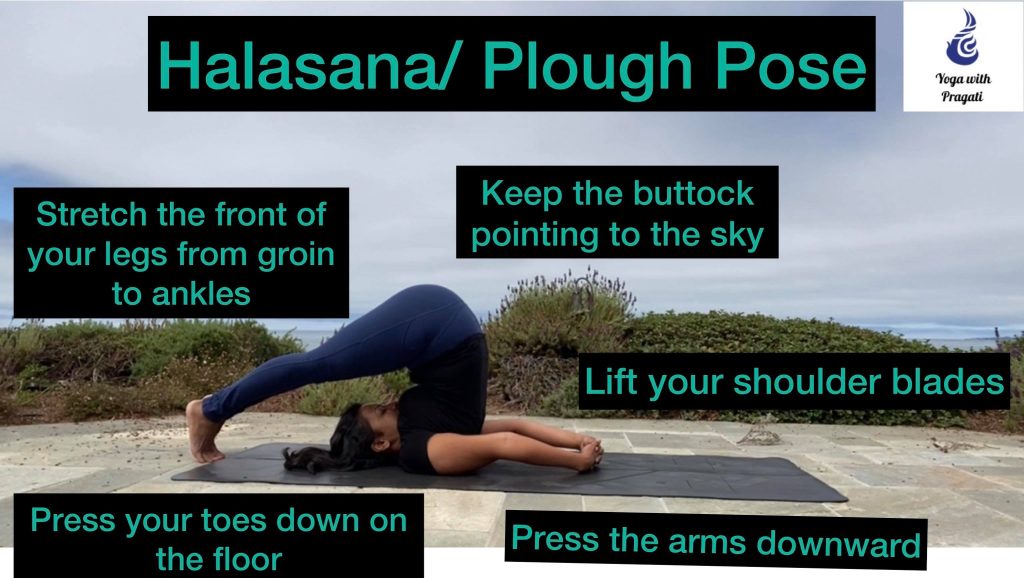Top 20 Halasana benefits

What are some Halasana benefits? Halasana is a folded inversion, typically a finishing pose, that may be practiced at the end of a yoga session. The deep inward folding in Halasana resembles the plough used in fields and hence the name. This pose allows you to come home to yourself while stretching the entire spine.
Halasana is a folded inversion, typically a finishing pose that may be practiced at the end of a yoga session. The deep inward folding in Halasana resembles the plough used in fields and hence the name. This pose allows you to come home to yourself while stretching the entire spine.
Prerequisites for Halasana/ Plough pose:
- Open shoulders
- Ability to lift the upper spine to hips in an inversion
- No neck or shoulder injuries
Steps to get into Halasana/ Plough pose:
1. Begin by lying on your back, arms at your sides, palms down. Widen your shoulder blades with a slight inner rotation of the upper arms.
2. Inhale fully. As you exhale, press your palms into the floor and firm up your legs, drawing them together, then lift your legs upward perpendicular to the floor.
3. Take a few deep breaths and release the neck and relax the jaw and tongue. Extend the shoulders downward and away from your ears and press the arm-bones towards the mat.
4. Engage your core and lift your hips over your shoulders.
5. Keeping the legs straight, bring your feet to the floor above the head.
6. Interlace the fingers behind your back, if possible.
7. Do not look to the side, as your neck is in a compromised position.
8. Stay breathing evenly for 3-5 minutes.
Halasana Benefits
1. Calms the brain and helps to restore the clarity of mind after any illness.
2. Stimulates the abdominal organs, clears constipation and stomach disorders.
3. Regulates metabolism and helps in weight loss.
4. Excellent asana for diabetic patients because it normalizes blood sugar levels.
5. Organs like the thyroid, kidney, spleen, and pancreas are stimulated.
6. Stretches the shoulders and spine and helps to keep the back flexible and strong.
7. Relieves backaches, lumbago, and arthritis of the back and spine.
8. The reversed blood flow helps in keeping the skin nourished and young.
9. Helpful for women suffering from menstrual disorders.
10. Relieves the symptoms of menopause and stimulates the reproductive system.
11. Helps reduce stress fatigue by resting and relaxing the eyes and brain.
12. Helps cure backaches, infertility, sinusitis, insomnia, and headaches.
13. Relieves fatigue and boosts energy levels and self-confidence.
14. Relieves palpitations and breathlessness.
15. Alleviates throat ailments, asthma, bronchitis, colds, and congestion.
16. Controls hypertension. People with high blood pressure should not attempt Sarvangasana/ Shoulderstand unless they do Halasana first and stay in it for not less than 3 minutes.
17. Helps treat hernia and hemorrhoids, if practiced with legs separated.
18. Relieves pain or cramps in the fingers, hands, wrists, elbows, and shoulders, if practiced with arms and interlocked fingers extended toward the legs.
19. Preparatory pose for Paschimottanasana or seated forward fold.
20. The entire body becomes light and easy after the practice of Halasana.
Avoid or use caution when practicing Halasana/ Plough pose:
- Diarrhea
- Menstruation
- Neck injury
- With the feet on the floor, this pose is considered to be intermediate to advanced. It is not advisable to perform the pose in this way without sufficient prior experience or unless you have the supervision of an experienced instructor.
- Ischemia
- Headaches and/or migraines
- Asthma or breathing difficulties
- High blood pressure
- Physical and mental fatigue
- If you are prone to headaches, migraines, asthma, breathing difficulties, high blood pressure, physical and mental fatigue, or are overweight, practice Halasana with props and with your eyes closed.

Tips and tricks for balance in Halasana/ Plough pose:
1. The best way to do this asana is to place folded blankets under your shoulders. This provides some support to your upper body and neck.
2. If you find it difficult to lift your hips off the ground, try placing a bolster under them. This should give you the initial push. Or you can face the wall and gradually walk your feet up the wall.
3. Consciously relax the skin and muscles of your face. Keep your gaze on your chest, do not look up.
4. For those with a stiffer back, try another version of Halasana, known as Ardha-halasana where your legs are parallel to the floor and resting on a chair or against the wall.
5. Lift your sternum and chest to relax the throat and ensure smooth and effortless breathing.

Props that support Halasana/ Plough pose:
Plow Pose stretches the shoulders, back, neck, hamstrings, and calves. It is a pose that stretches the paraspinal muscles of the lower back, which are often not targeted in other poses.
- Using a chair, get into Sarvangasana, and then holding onto the chair, bring your legs down to get into Halasana.
- You can also use the yoga wheel to stretch the arms in the opposite directions of the legs.
- If it is difficult to breathe once you are in the pose, you can support your legs on a chair or against the wall to have them parallel to the mat to get max Benefits of Halasana.
Yoga Wheel Set – (3 Pack) Strongest & Most Comfortable Back-Roller Wheel for Pain Relief, Stretching, Backbends and Poses, Thickest Foam Padding (with carrying Bag & Yoga Strap)
Ikigai Yoga Wheel (Pro Series) for Back Pain, Stretching, Yoga Practice, and Poses WE PLANT TREE’S – A Yoga Wheel Set with a Purpose! We have teamed…

Suggested sequence for Halasana/ Plough pose practice:
1.Virasana/ Hero’s pose
2.Supta Virasana/ Reclined Hero’s pose
3.Adho Mukha Svanasana/ Downward facing dog
4.Uttan Prishthasana/ Lizard pose
5.Virbhadrasana 1/ Warrior 1
6.Chapasana/ Sugarcane pose
7.Shalabasana/ Locust pose
8.Ustrasana/ Camel pose
9.Dhanurasana/ Bow pose
10. Matseyasana/ Fish pose
11. Dolphin pose
12. Anahatasana
13. Paschimottansana/ Seated forward fold
14. Halasana/ Plough pose
15. Sarvangasana/ Shoulderstand
16. Pavan Muktasana/ Wind relieving pose
17. Shavasana
For full access to this class and over 100+ other classes divided into Beginner’s, Intermediate and Advanced, subscribe to Yoga with Pragati at the link below:
Iyengar Yoga Monthly Live & VOD
Halasana and throat chakra
If you are unfamiliar with chakra, please refer to Powerful Asanas and Affirmations for Chakra Balancing.
“Our body is a divine instrument played by the breath. It is our job to keep the instrument well tuned and to listen to the voice of Truth moving through us.”
~Anodea Judith
We use the subtle energy of the Throat (Vishuddha) Chakra to communicate our needs, wants, concerns, sadness, and happiness. As we freely share our stories and songs, that opens us to our own “inner-net” of consciousness. The throat chakra is our center for speaking up our Truth and also for our deep listening capacity.
In Yoga, we learn to communicate with that inner-net, an elaborate system of neurons, muscles, cells, breath, and sensation, which lets us know whether we are doing to pose right intrinsically. Yoga allows us to speak that spiritual language that brings us into deeper communication with the Divine.
There are three internal “locks” used in Yoga and meditation practice to control and harness energy flow through the body. The Root Lock (Mula Bandha) activates in the pelvis. The abdominal Lock (Uddiyana Bandha) is the lower torso. Throat Lock (Jalandhara Bandha) originates in the neck, an area that often holds tension.
Energetically, Jalandhara is connected to the Throat (Vishuddha) chakra. Clearing this chakra helps with better communication and self-expression. Physiologically, practicing the Throat Lock is thought to be beneficial for promoting thyroid health. It gives triumph over death. Here the meaning of death is not the death of the body.
Rather it means that the yogi can control the physical changes that happen in the body. It means activation of the Vishuddha Chakra helps with anti-aging.
Halasana or plow pose is one of the recommended asanas for cleansing Vishuddha chakra. This pose naturally creates Jalandhar bandha, the third energetic lock when the chest lifts towards the chin. Doing so lengthens the back of the neck- an area that can hold a lot of tension- which eliminates the curvature of the spine for better energy flow.
This bandha pierces Rudra Granthi, which functions in the Third Eye (Ajna) chakra region. It is associated with attachment to Siddhis, which are supernatural or magical powers and abilities resulting from yogic advancement through meditation and Yoga. When Rudra Granthi is pierced, the idea of ego disappears, and we experience yogic oneness with the universe.
In Halasana or plow pose, it is recommended that you chant ‘Ham’ as this bija mantra resonates in the throat. This is for more advanced practitioners who have already mastered the physical aspects of the asana. Halasana, along with other asanas like Sarvangasana, Matseyasana, etc., helps to align the Throat chakra.
When that chakra is balanced, you will speak your raw Truth, and it will always be in harmony with Life-Force because this is an intelligent universe. Speaking from your center of higher consciousness will never create disharmony because Truth is always the Truth.
Frequently Asked Questions
How to do Halasana if hamstrings are tight?
If your hamstrings are tight, you can bend your knees when you take your legs overhead. Also, you can rest the toes/ legs over a chair or against the wall and not take them all the way down to the floor.
What to do if practicing Halasana makes you feel breathless?
To find more room in the chest, shoot the tailbone upward and firmly push through your shoulders down. Soften the chin, throat and chest and keep the gaze inward to enable smooth even breathing.
Is there any advanced variation of Halasana?
If you are able to comfortably take your toes to the mat with your legs stretched away from your arms, you can walk your feet sideways to get into Parsva Halasana/ Side plough pose. Hold for a few breaths and then walk your feet to the center and repeat on the other side.
Check for the FREE Trial 5 Class package.
Check out the website: http://yogawithpragati.com
Other reference:
- Most important facts about Pincha Mayurasana with 8 Tips and Tricks
- 10 Tips To Help Your Daily Yoga Practice











